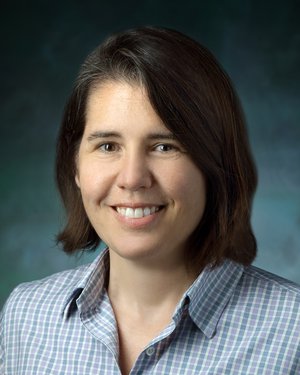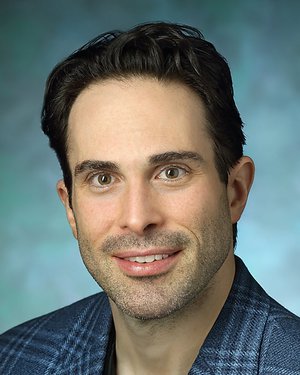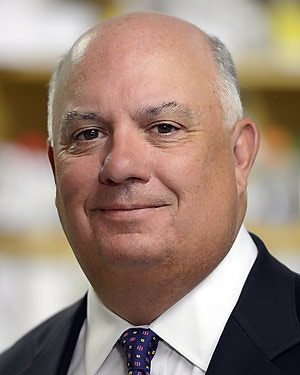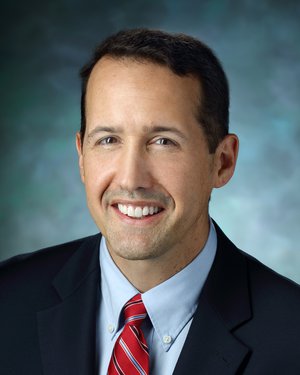Research Lab Results
-
Agrawal Lab
The Agrawal Lab is focused on the medical and surgical treatment of otologic and neurotologic conditions. Research is focused on the vestibular system (the inner ear balance system), and how the function of the vestibular system changes with aging. Particular focus is given to study how age-related changes in vestibular function influence mobility disability and fall risk in older individuals. -
John Carey Lab
The John Carey Lab studies inner ear balance function in Menière’s disease and steroid treatment of sudden hearing loss. Other research of interest includes the normal vestibular reflexes and how they change with age, the ototoxic effects of gentamicin, the use of intratympanic steroids for Menière’s disease, the diagnostic utility of vestibular evoked myogenic potential testing, and the mechanisms of vestibular migraine.
-
Welling Laboratory
Dr. Paul A. Welling and his research team explore the genetic and molecular underpinnings of electrolyte physiology, potassium balance disorders, hypertension and kidney disease. A major thrust of current research activity is devoted to understanding how faulty genes and environmental stresses drive hypertension. The research is providing new insights into how the Western diet triggers deleterious responses of salt-sensitivity genes. The Welling laboratory employs a multidisciplinary approach, spanning from gene discovery, molecular biology, genetically engineered mouse models to translational studies in humans. By illuminating pathophysiological mechanisms and translating the discoveries to develop more effective diagnostic and therapeutic strategies, Welling’s group is striving to improve the health of at-risk individuals and patients with kidney disease and hypertension.
Dr. Welling is the Joseph S. and Esther Hander Professor of Laboratory Research in Nephrology. He has been continuously funded by the National Institutes of Health for over 25 years. Currently he serves as Coordinator of a Global Research Network, funded by the LeDucq Foundation. More about his research can be found at https://www.wellinglab.com/ -
Vestibular Neurophysiology Laboratory
The mission of the laboratory of vestibular neurophysiology is to advance the understanding of how the body perceives head motion and maintains balance - a complex and vital function of everyday life. Although much is known about the vestibular part of the inner ear, key aspects of how the vestibular receptors perceive, process and report essential information are still mysterious. Increasing our understanding of this process will have tremendous impact on quality of life of patients with vestibular disorders, who often suffer terrible discomfort from dizziness and vertigo. The laboratory group's basic science research focuses on the vestibulo-ocular reflexes - the reflexes that move the eyes in response to motions of the head. They do this by studying the vestibular sensors and nerve cells that provide input to the reflexes; by studying eye movements in humans and animals with different vestibular disorders, by studying effects of electrical stimulation of vestibular sensors, and by using mathematical models to describe these reflexes. Researchers are particularly interested in abnormalities of the brain's inability to compensate for vestibular disorders. -
Vestibular NeuroEngineering Lab
Research in the Vestibular NeuroEngineering Lab (VNEL) focuses on restoring inner ear function through “bionic” electrical stimulation, inner ear gene therapy, and enhancing the central nervous system’s ability to learn ways to use sensory input from a damaged inner ear. VNEL research involves basic and applied neurophysiology, biomedical engineering, clinical investigation and population-based epidemiologic studies. We employ techniques including single-unit electrophysiologic recording; histologic examination; 3-D video-oculography and magnetic scleral search coil measurements of eye movements; microCT; micro MRI; and finite element analysis. Our research subjects include computer models, circuits, animals and humans. For more information about VNEL, click here. VNEL is currently recruiting subjects for two first-in-human clinical trials: 1) The MVI Multichannel Vestibular Implant Trial involves implantation of a “bionic” inner ear stimulator intended to partially restore sensation of head movement. Without that sensation, the brain’s image- and posture-stabilizing reflexes fail, so affected individuals suffer difficulty with blurry vision, unsteady walking, chronic dizziness, mental fogginess and a high risk of falling. Based on designs developed and tested successfully in animals over the past the past 15 years at VNEL, the system used in this trial is very similar to a cochlear implant (in fact, future versions could include cochlear electrodes for use in patients who also have hearing loss). Instead of a microphone and cochlear electrodes, it uses gyroscopes to sense head movement, and its electrodes are implanted in the vestibular labyrinth. For more information on the MVI trial, click here. 2) The CGF166 Inner Ear Gene Therapy Trial involves inner ear injection of a genetically engineered DNA sequence intended to restore hearing and balance sensation by creating new sensory cells (called “hair cells”). Performed at VNEL with the support of Novartis and through a collaboration with the University of Kansas and Columbia University, this is the world’s first trial of inner ear gene therapy in human subjects. Individuals with severe or profound hearing loss in both ears are invited to participate. For more information on the CGF166 trial, click here. -
Doetzlhofer Laboratory - Center for Sensory Biology
Auditory hair cells, located in the inner ear cochlea, are critical for our ability to detect sound. Research in Dr. Doetzlhofer's laboratory focuses on ways to identify and characterize the molecular mechanisms of hair cell development in the mammalian auditory system. She is also seeking to identify the molecular roadblocks preventing mammalian hair cell regeneration.
-
Carey Research Group
John Carey’s Research Group conducts research regarding diseases of the inner ear that affect both balance and hearing mechanisms. Key interests include superior semicircular canal dehiscence syndrome (SCDS), the normal vestibular reflexes and how they change with age, novel intratympanic treatments (i.e., middle ear injections) for conditions like Menière’s disease and sudden hearing loss, and the mechanisms of vestibular migraine. With Lloyd Minor, Dr. Carey helped develop the operation to repair the superior canal in patients with SCDS using image-guided surgery. Dr. Carey has been funded by the National Institutes of Health – National Institute on Deafness and Other Communication Disorders to study inner ear balance function in Menière’s disease and steroid treatment of sudden hearing loss.
-
Gerard E. Mullin Lab
The Gerard E. Mullin Lab studies nutrition and the way that diet affects weight loss. In particular, we study how having an imbalanced gut microbiome may prevent weight loss in certain people.
-
Elisseeff Lab
The mission of the Elisseeff Lab is to engineer technologies to repair lost tissues. We aim to bridge academic research and technology discovery to treat patients and address clinically relevant challenges related to tissue engineering. To accomplish this goal we are developing and enabling materials, studying biomaterial structure-function relationships and investigating mechanisms of tissue development to practically rebuild tissues. The general approach of tissue engineering is to place cells on a biomaterial scaffold that is designed to provide the appropriate signals to promote tissue development and ultimately restore normal tissue function in vivo. Understanding mechanisms of cellular interactions (both cell-cell and cell-material) and tissue development on scaffolds is critical to advancement of the field, particularly in applications employing stem cells. Translation of technologies to tissue-specific sites and diseased environments is key to better design, understanding, and ultimately efficacy of tissue repair strategies. We desire to translate clinically practical strategies, in the form of biomaterials/medical devices, to guide and enhance the body's natural capacity for repair. To accomplish the interdisciplinary challenge of regenerative medicine research, we maintain a synergistic balance of basic and applied/translational research. -
Laboratory of Airway Immunity
We are interested in understanding how innate immune responses regulate lung health. Innate immunity involves ancient, and well-conserved mediators and their actions regulate the balance between homeostasis and pathogenesis. In the lungs, innate immunity play a critical role in response to environmental exposures such as allergen and ambient particulate matter. My lab focuses on how these exposures can promote aberrant mucosal responses that can drive the development of diseases like asthma.
Principal Investigator
Department



